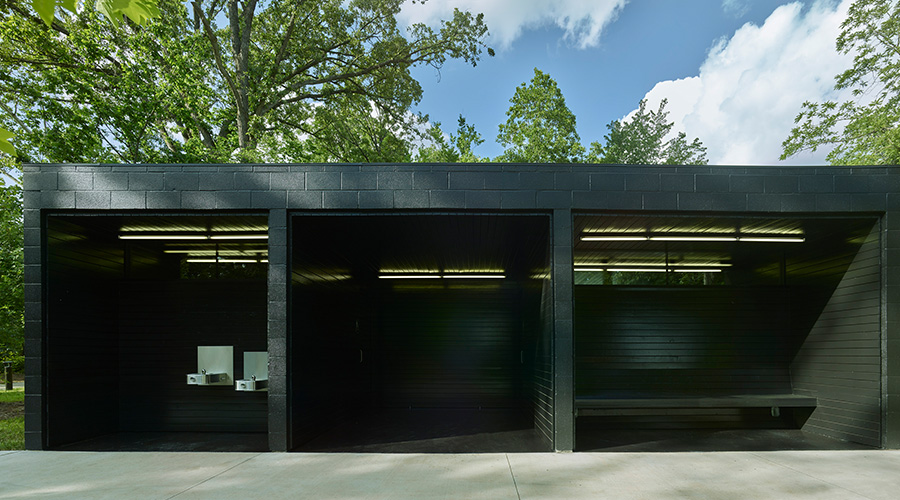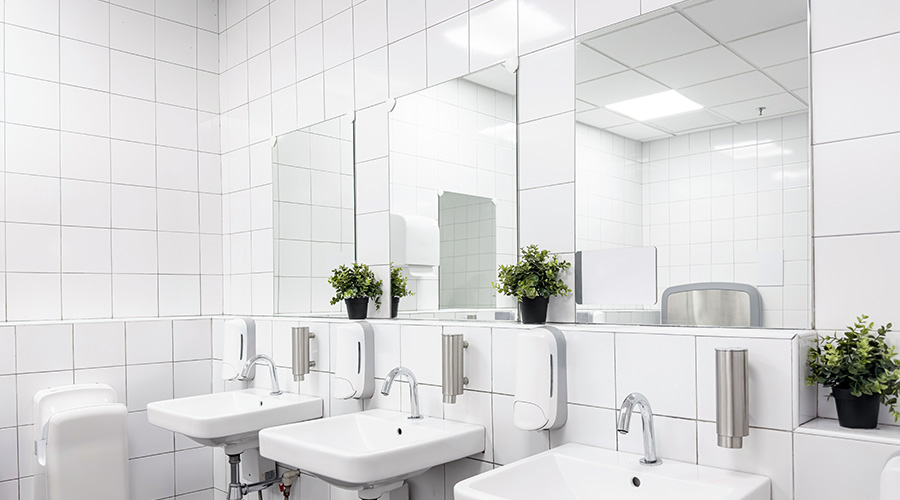Considering Life Cycle Costs Can Pay Off in Restroom Renovations
Restroom components tend to have a relatively long service life, typically 20 years or more. Therefore, decisions made during the planning process of a restroom renovation will have to be lived with for a very long time.
Most renovation planning, including that for restroom renovation programs, focuses on first costs. But focusing solely on first costs runs the risk of increasing long-term operating and maintenance costs. If facility managers focus on long-term operating and maintenance costs, however, they will increase the renovation project's first cost. Increase it too much and the project gets axed before it even begins.
What facility managers need is to find a balance between first costs and long-term operating and maintenance costs. That way they can easily justify upfront investments in higher cost restroom components and finishes on the basis of the savings that can be achieved over the service life of the restroom. Perhaps the best way to achieve that balance is to perform a life cycle cost analysis.
A life cycle cost analysis allows facility managers to compare different design and purchase options, and determine what their total cost of ownership will be over the service life of the restroom. In addition to purchase and installation costs, the analysis examines the estimated service life for that component or finish based on the projected level of use in a facility, its total operating and maintenance costs over a set period of time, and its removal and disposal costs at the end of its service life.
When conducting a life cycle cost analysis, it is important that managers take into consideration all cost factors related to the particular option or finish that they are considering. Overlooking or using unrealistic values will skew the analysis and give false results.
Real-World Service Life
Manufacturers frequently give information in their product descriptions of the expected service life for their product. In most cases, this information is derived from product testing under a given set of conditions designed to simulate real world activities. And while this rated service life information is useful, facility managers should recognize that the particular characteristics of their application will have a great impact on a product's service life.
There are three basic types of restrooms in commercial and institutional facilities today: high-demand facilities, high-profile facilities, and those at risk for high abuse. The same component or finish will have a much different service life in each restroom type.
High-demand restrooms, such as those found in airport facilities, require components and finishes that are rated for a high volume of traffic. This means that components must have a very high cycle rating if they are expected to have a reasonable service life. Similarly, components must be designed with ease of maintenance being a major consideration, as high-demand restrooms typically cannot be taken out of service for a lengthy period of time.
High-profile restrooms, such as those found in corporate headquarters, are more geared towards supporting the image of the facility. The volume of traffic in these facilities is much lower so components do not need to have a very high cycle rating. In these facilities, though, it is important that components and finishes be selected that do not show dirt or stains. Service life in these restrooms, while somewhat important, takes a backseat to appearance.
Restrooms that are at risk for high levels of abuse, such as those in a shopping center, require that all components and finishes be selected on the basis of their resistance to vandalism. It does not matter in these facilities if a component is rated to have a long service life yet can be easily damaged or destroyed. Service life must be based on how long a particular component or finish can be reasonably expected to perform in this type of application.
Considering the Cost of Water
Restrooms are one of the major users of water within most commercial and institutional facilities. The Energy Policy Act of 1992 established maximum flow rates for restroom fixtures. As a result, facilities saw a very significant reduction in their restroom water requirements. While some early generation low flow devices were not very effective, today's devices perform at or above the level of devices used before the low flow requirements were put into effect.
All restroom renovation programs today must use devices that meet these flow requirements. When considering restroom renovation options, the standards as established should be considered a minimum standard. There are devices on the market today that can reduce the use of water even further. While the cost of these devices typically is higher than those that meet the minimum standard, facility managers should consider the trade-off between long-term water savings and increased first costs.
Equally important to the selection of low water use devices is the type of controls installed on those devices. One of the most effective controls for reducing water use is the touchless electronic control. When added to restroom faucets, water use can be reduced by as much as 80 percent compared to manual controls. Electronic touchless flush valves typically reduce water use by 50 percent. Here too there is a trade-off between low first cost and long-term water savings that must be evaluated. Depending on the application and the level of use, electronic flush valves and faucet controls will pay for themselves in three to twelve months.
Related Topics:













